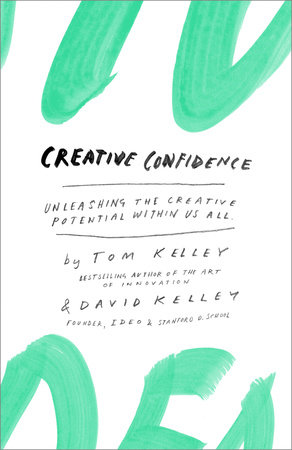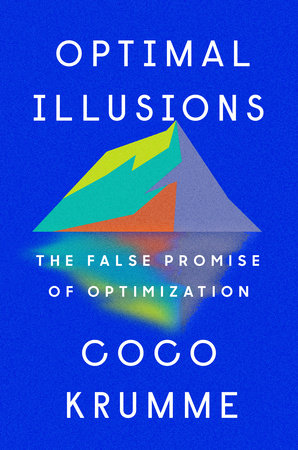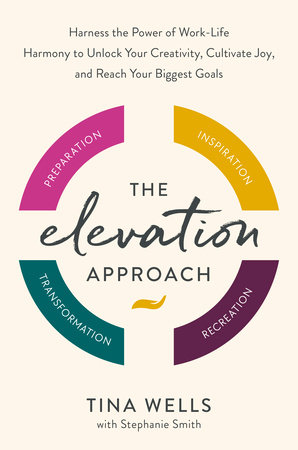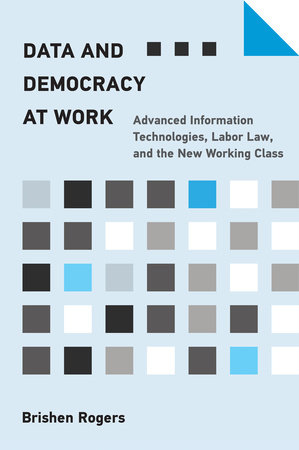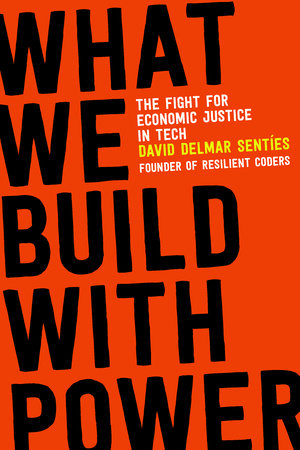Quick Summary
One Sentence Summary
“Creative Confidence” by David Kelley and Tom Kelley provides practical insights into unleashing creativity, breaking barriers of self-doubt, and fostering innovation in everyday life.
Big Idea
The central theme of “Creative Confidence” is that everyone has creative potential, and it can be nurtured and developed through practice and the right mindset, transforming how we approach problems and solutions in personal and professional contexts.
Five Key Ideas
- Demystifying Creativity: The book challenges the myth that creativity is an inborn talent, emphasizing that it’s a skill that can be cultivated.
- Overcoming Fear of Failure: It addresses the fear of judgment and failure as major obstacles to creativity, offering strategies to overcome these barriers.
- Design Thinking: The Kelleys introduce design thinking as a problem-solving process that can unlock creativity and innovation.
- Building Creative Confidence: The authors provide practical steps and exercises to build one’s creative confidence, making creativity a daily practice.
- Applying Creativity Broadly: The book explores the application of creative thinking not just in art or design, but in business, education, and everyday challenges.
Actionable Advice
- Start Small: Begin with small, manageable creative projects to build confidence.
- Embrace Failure: View failures as learning opportunities and stepping stones to success.
- Cultivate a Creative Environment: Surround yourself with people and environments that inspire creativity.
- Practice Regularly: Make creativity a regular part of your routine, even in small ways.
About the Authors
David Kelley is the founder of the renowned design firm IDEO and a professor at Stanford University. Tom Kelley is a partner at IDEO and the author of “The Art of Innovation.” Together, they combine their extensive experience in design and innovation to guide readers on a journey of discovering and nurturing their creative potential.
Read Next
- “The Art of Innovation” by Tom Kelley: Further explores the principles and strategies for fostering innovation.
- “Mindset” by Carol S. Dweck: Delivers insights into how a growth mindset can enhance personal and professional growth, including creativity.
- “Steal Like an Artist” by Austin Kleon: Offers a unique perspective on creativity and how to find inspiration in the world around you.
In Depth
Demystifying Creativity
“Creative Confidence” shatters the myth that creativity is a rare gift bestowed upon a select few. Instead, it posits that creativity is like a muscle – the more you use it, the stronger it gets. The Kelleys argue that everyone has inherent creative abilities; it’s just a matter of tapping into and nurturing them.
The book dives deep into this idea by emphasizing that creativity isn’t confined to artists or designers. It’s a universal trait that can manifest in various forms, whether in solving everyday problems, devising new business strategies, or simply finding more joy in daily tasks.
A compelling example from the book illustrates this point perfectly. The Kelleys recount the story of Doug Dietz, a medical equipment designer. Dietz initially designed a state-of-the-art MRI machine, but upon seeing a young patient’s terror at the prospect of using the machine, he realized something was missing. This realization sparked a creative journey. Instead of just creating a functional piece of equipment, Dietz reimagined the MRI experience for children. He transformed the machine and the room into an adventure, complete with a pirate ship design and a story. This simple yet profound change led to a dramatic decrease in the need for sedation in young patients. Dietz wasn’t just being creative in the artistic sense; he was employing creative thinking to solve a real-world problem.
The Kelleys underscore this story with a powerful quote:
“What we’ve found is that the people who have the most impact – and the most fulfillment – are those who have the confidence to think in creative ways, despite the unpredictability of the world around them.”
This quote encapsulates the essence of the key idea. Creative confidence isn’t about being the best artist or the most innovative inventor; it’s about having the courage to think differently and the resilience to keep trying even when the path isn’t clear.
The authors stress that breaking down the myth of creativity as an innate talent is crucial. When people understand that creativity can be developed, they are more likely to engage in creative endeavors. This understanding can transform how individuals approach challenges, both in their personal lives and in the workplace.
To foster this mindset, the book suggests practical steps. For instance, it encourages readers to adopt a “beginner’s mind,” approaching problems with fresh eyes and a sense of curiosity. It also advises practicing empathy, which can lead to more human-centered and creative solutions, much like Doug Dietz did with his MRI machine.
In summary, demystifying creativity is about changing perceptions. It’s about understanding that everyone has the potential to be creative and that this potential can be realized through practice, empathy, and a willingness to see the world differently. By embracing this idea, individuals can unlock a wealth of possibilities, finding creative solutions to even the most daunting challenges.
Overcoming Fear of Failure
The Kelleys emphasize that fear of failure is a major roadblock to creativity. They argue that this fear often stems from the worry of being judged or not meeting expectations. To unlock true creative potential, one must learn to overcome this fear.
A powerful example from “Creative Confidence” is the story of a nurse named Beth. She was working in a neonatal unit where infections were a serious issue. Despite not being a traditionally trained designer or innovator, Beth was determined to reduce infection rates. She bravely proposed a simple yet effective solution: a checklist to ensure hygiene protocols were followed consistently. Initially, she faced resistance and skepticism. But, Beth persisted, undeterred by the fear of failure. Her initiative led to a significant reduction in infections, proving her creativity and determination.
The Kelleys highlight this story, stating:
“The fear of failure often holds us back from trying new things. But when we give ourselves permission to fail, we at the same time give ourselves permission to excel.”
This quote drives home the message that overcoming the fear of failure is pivotal. It’s not just about the freedom to make mistakes; it’s about allowing oneself to reach new heights of creativity and innovation.
The book guides readers on how to navigate this fear. One approach is reframing failure as a learning opportunity. Instead of viewing mistakes as setbacks, see them as valuable feedback on the creative journey.
Another technique is to start small. The Kelleys advise taking on manageable challenges that encourage creative thinking but don’t carry the weight of high stakes. This strategy helps build confidence gradually, making it easier to tackle bigger, riskier ideas without being paralyzed by fear.
Moreover, the authors suggest creating a supportive environment. Surrounding oneself with people who encourage experimentation and understand that failure is part of the process can significantly reduce the fear associated with trying new things.
Ultimately, the key idea here is to shift the mindset. Embracing failure as an inevitable and valuable part of the creative process can open up a world of possibilities. It allows for experimentation, encourages risk-taking, and paves the way for groundbreaking ideas and solutions, just as it did for Beth in the neonatal unit. By overcoming the fear of failure, individuals can unlock their full creative potential and contribute meaningful innovations to their fields and communities.
Design Thinking
Design thinking is presented in “Creative Confidence” as a revolutionary approach to problem-solving. It’s not just for designers; it’s a methodology that can be applied in any field to foster innovation and creativity.
A vivid example from the book is the story of a hospital looking to improve the experience of chemotherapy patients. Instead of making assumptions, a team employed design thinking by empathizing with patients. They spent time understanding their experiences, fears, and needs. The insights gained led to significant changes, including redesigning the chemotherapy rooms to feel less clinical and more comforting, which drastically improved the patients’ experience.
The Kelleys encapsulate the essence of design thinking with this quote:
“Design thinking relies on the human ability to be intuitive, to recognize patterns, and to construct ideas that are emotionally meaningful as well as functional.”
This quote emphasizes that design thinking is about more than just functionality; it’s about creating solutions that resonate on a human level.
The book breaks down design thinking into several key stages:
- Empathy: Understanding the needs, motivations, and feelings of those you are designing for.
- Define: Clearly articulating the problem based on the insights gained through empathy.
- Ideate: Generating a wide range of possible solutions without judgment or restriction.
- Prototype: Creating tangible representations of ideas to test and refine them.
- Test: Trying out solutions with real users, collecting feedback, and making necessary adjustments.
One of the crucial points the Kelleys make is that design thinking is iterative. It’s not a linear process but a cycle of learning, experimenting, and refining. This approach encourages a deep understanding of the problem and fosters creative solutions that are genuinely user-centered.
In addition, the authors stress the importance of collaboration in design thinking. Bringing together diverse perspectives and skills can lead to more innovative and comprehensive solutions, as demonstrated in the chemotherapy room example. Collaboration ensures that different aspects of a problem are considered and addressed.
The key idea of design thinking, as laid out in “Creative Confidence,” is about adopting a mindset that is open, empathetic, collaborative, and experimental. It’s about seeing beyond the obvious, asking the right questions, and daring to innovate. By applying design thinking principles, individuals and organizations can tackle challenges in a more creative and effective manner, leading to solutions that truly make a difference in people’s lives.
Building Creative Confidence
“Creative Confidence” emphasizes that building creative confidence is key to unlocking one’s full creative potential. The authors argue that it’s not about innate talent, but about developing the belief in one’s ability to create and contribute creatively.
An inspiring example in the book is that of a young boy named Jason. He was initially hesitant to engage in creative activities, feeling he wasn’t “creative enough.” However, through encouragement and exposure to various creative exercises, Jason began to take small steps. He started with simple drawings, gradually moving to more complex projects. This journey transformed his perception of himself, turning his hesitation into enthusiasm for creative endeavors.
The Kelleys highlight this transformation, stating:
“Creative confidence is like a muscle—it can be strengthened and nurtured through effort and experience.”
This quote underscores the core message: creative confidence grows through practice and persistence.
To foster this growth, the book offers practical advice. First, it encourages starting with small, achievable creative tasks. These small victories help build momentum and confidence.
Second, the authors suggest embracing a growth mindset, as proposed by Carol Dweck in her book “Mindset.” This mindset involves seeing abilities as malleable and believing that skills, including creativity, can be developed over time.
Another important aspect is the encouragement of exploration and curiosity. Trying new things, asking questions, and looking at problems from different angles can stimulate creative thinking and bolster confidence in one’s creative abilities.
The book also emphasizes the role of reflection and self-awareness. Understanding one’s creative process, recognizing patterns, and acknowledging successes (and failures) are crucial steps in building creative confidence.
The key idea here is that creative confidence isn’t static; it’s dynamic and evolves. It’s about fostering a belief in oneself, not just as a creator of art or design, but as a creative thinker capable of innovative solutions and ideas. Through practical steps and a mindset shift, individuals can nurture their creative confidence, leading to a more fulfilling and impactful engagement with the world around them.
Applying Creativity Broadly
“Creative Confidence” drives home the point that creativity isn’t limited to artistic endeavors but is applicable and essential across various aspects of life, including business, education, and everyday challenges.
A powerful example from the book involves a team at a large healthcare company. They faced a daunting challenge: redesigning the patient care experience. Instead of traditional methods, they applied creative thinking. They didn’t just focus on medical outcomes; they considered the emotional journey of patients. By broadening their creative approach, they not only improved the patient experience but also saw a positive impact on the business’s bottom line.
The Kelleys encapsulate this holistic view of creativity:
“Creativity is not a ‘nice to have’ but a ‘must-have’ for businesses and individuals facing complex challenges.”
This quote underlines the broad applicability of creativity.
The book suggests that applying creativity broadly involves breaking down the artificial barriers between disciplines. It’s about seeing connections and possibilities where others see divisions.
One key approach is fostering interdisciplinary collaboration. Bringing together diverse perspectives can lead to more innovative and effective solutions, as was the case with the healthcare team.
Another aspect is cultivating an environment where creative thinking is encouraged and valued. This involves creating safe spaces for experimentation, encouraging out-of-the-box thinking, and rewarding innovative approaches.
The authors also stress the importance of empathy in applying creativity broadly. Understanding the needs, desires, and challenges of others can lead to more human-centered and impactful solutions.
The key idea here is that creativity is not just for creating art or products; it’s a fundamental skill for navigating and transforming the complex challenges of the modern world. By applying creativity broadly, individuals and organizations can develop more holistic, innovative, and effective solutions to the problems they face.
Actionable Advice
- Challenge Assumptions: Question the status quo. Look for new angles and perspectives.
- Start Small: Tackle manageable creative tasks. Build confidence gradually.
- Embrace Failure: View mistakes as learning opportunities, not setbacks.
- Foster Empathy: Understand others’ needs and experiences. Apply these insights to your creative process.
- Collaborate: Bring diverse minds together. Value different viewpoints.
- Practice Regularly: Treat creativity like a muscle. Exercise it often.
- Stay Curious: Ask questions. Explore new ideas and fields.
- Reflect and Refine: Continuously evaluate your creative process. Learn from both successes and failures.
- Create Safe Spaces: Encourage risk-taking and experimentation in your environment.
- Develop a Growth Mindset: Believe in your ability to grow and enhance your creative skills.
About the Author
David Kelley and Tom Kelley are brothers and prominent figures in design and innovation. David Kelley founded IDEO, a global design company, and the Stanford d.school. He’s renowned for pioneering design thinking, a problem-solving approach. Tom Kelley is a partner at IDEO and author of best-selling books like “The Art of Innovation.” Both hold degrees from Stanford University. They believe in democratizing creativity, insisting that everyone has the capacity to be creative. Their work revolves around empowering individuals and organizations to foster innovation and tackle complex challenges. They advocate for empathy, collaboration, and a human-centered approach in problem-solving. Through their writings and teachings, the Kelleys inspire people to embrace their creative potential and apply it broadly across different aspects of life and work.
Read These Next
You might like these similar books
- “The Art of Innovation” by Tom Kelley
- “Change by Design” by Tim Brown
- “The Design of Everyday Things” by Don Norman
- “Mindset: The New Psychology of Success” by Carol S. Dweck
- “Steal Like an Artist” by Austin Kleon
FAQ
Q: Who should read “Creative Confidence”?
A: Anyone interested in enhancing their creativity, including professionals, students, and educators.
Q: Do I need a design background to understand the book?
A: No, the book is written for a broad audience, regardless of background.
Q: Can “Creative Confidence” help in business?
A: Yes, it offers valuable insights for innovation and problem-solving in business.
Q: Is the book practical or theoretical?
A: It provides a mix of practical advice, real-world examples, and theoretical concepts.
Q: Are there exercises or tools in the book?
A: Yes, the book includes practical exercises and tools for boosting creativity.

